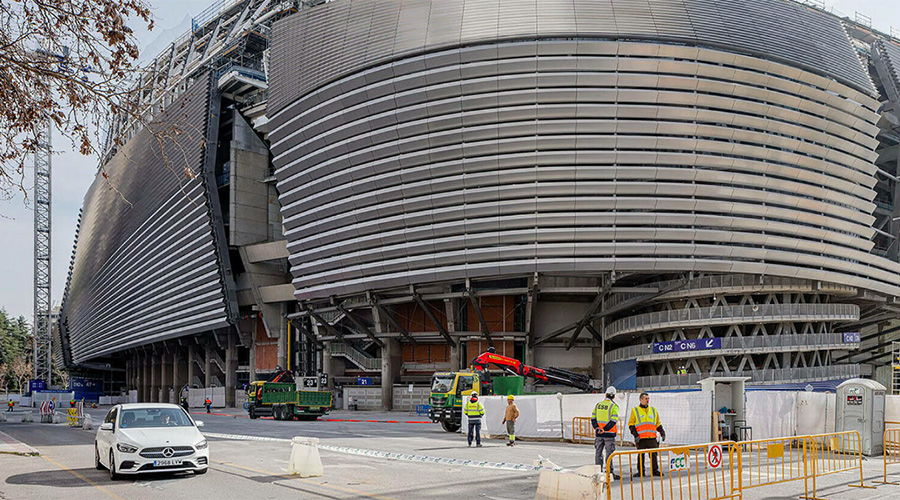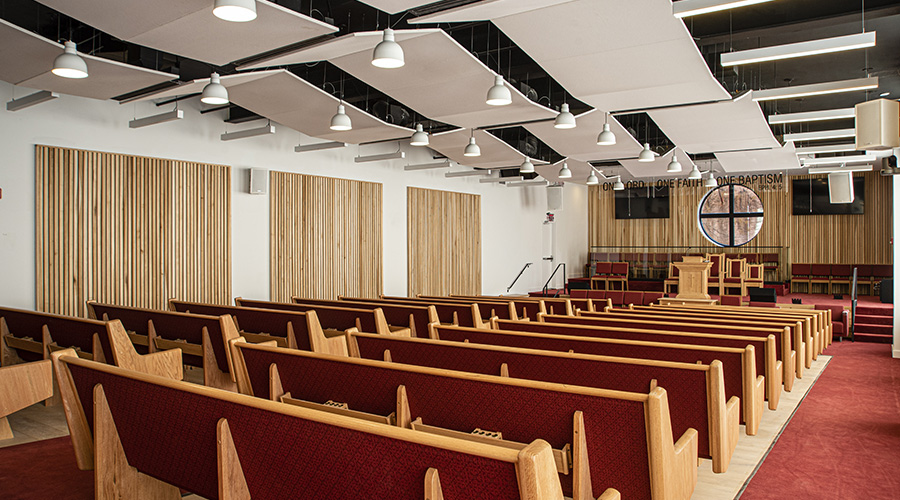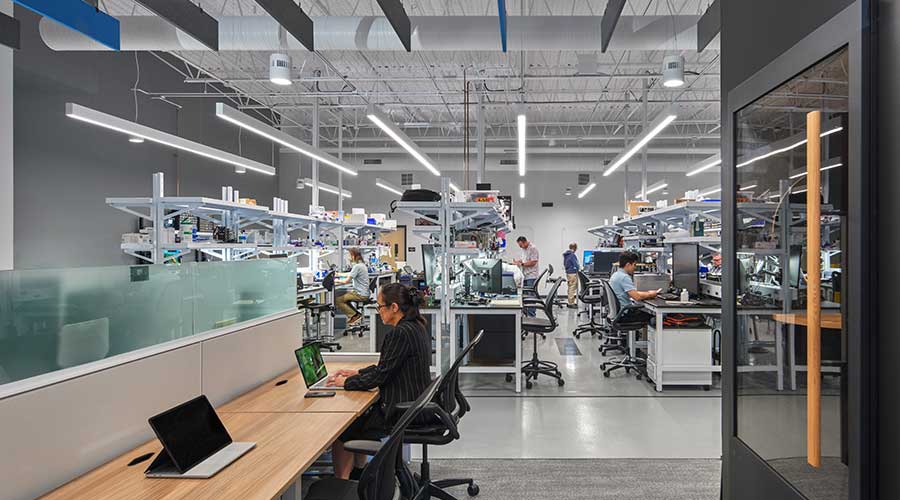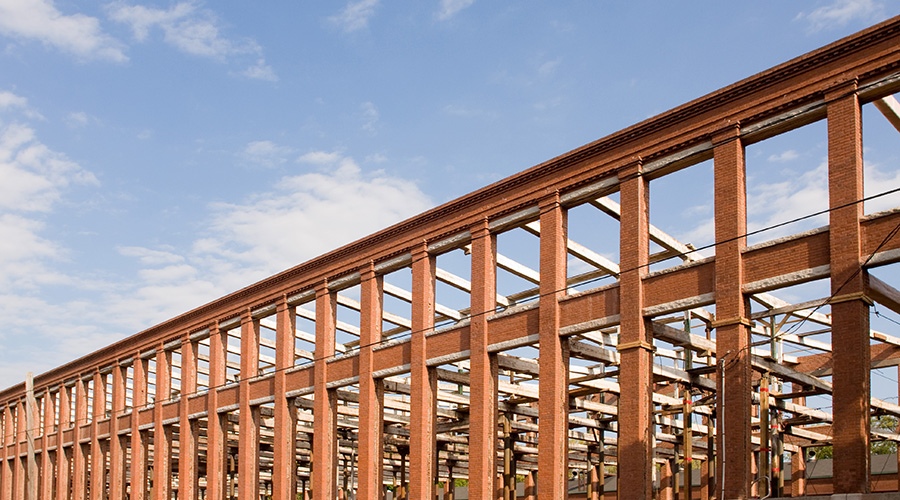Metal Wall Systems Are Becoming More Acceptable Option
As well as roofs, acceptance of metal for wall systems is growing. Part of the reason is because "architects have become much more creative with them," with horizontal looks and varied profiles, says Jim Bush, vice president of sales at ATAS.
Tuschall says that the newest look for metal walls uses vertical panels of different widths and subtle color combinations. Twenty years ago, he says, the color would have been uniform, but now "it creates a more natural look with the different shades. Like five shades of white — from a distance, it looks like stone." Some elementary schools, he said, go for wall combinations of different bright colors.
Metal building envelopes are well-suited to renovations, Tuschall says. "Whatever was there before, we can cover." Currently, he says, in the commercial market "lots of '70s and '80s buildings need to be dressed up. They want to create the image of being cutting edge."
Standing Up To The Elements
While metal roofs and walls work well for a variety of purposes, they also survive a variety of natural assaults. "Metal roofing performs best in the calamity belt," Kriner says, offering prime resistance to wind, hail, fire, and earthquake. In some areas of the country, he says, buildings with metal roofs get insurance discounts. And under normal wear and tear, "35- to 40-year-old roofs are looking like the day they're installed. They're outperforming even our expectations."
"Metal doesn't burn," Croucher points out. "From a fire standpoint, it's an excellent product." The interlocking edges of panels also provide excellent weather-tightness. The biggest threat to a metal building comes from salt corrosion near the coasts — but that problem can be solved by using aluminum instead of steel, or by using specific paint systems. Miller adds that in coastal areas it's more important to cut the material properly, to produce a clean edge with less surface area.
Snow will usually slide off a metal roof, eliminating the need for shoveling or weight reinforcement, but Croucher points out that facility managers don't want snow landing on a sidewalk or the area in front of a door. That issue can usually be avoided with a good design, he says.
Under hail, "metal doesn't split or crack or break," Miller says, and its resistance will not wear down over time.
Bush says his company installs many roofs in Florida and Guam, which have strict building requirements for wind resistance, and metal roofs easily come into compliance by installing extra fasteners at a relatively low cost.
ABOUT MCA
The Metal Construction Association brings together manufacturers and builders of metal roof and wall systems. Since 1983, the association has worked to promote the use of metal in construction through marketing, technology, and lobbying.
The MCA offers many programs and benefits, including certification for manufacturers and suppliers, product testing, technical publications and resources, and research into performance and sustainability. Marketing initiatives promote the use of metal throughout the construction industry. MCA monitors and responds to developments in building codes and regulatory issues, and sends regular electronic news updates to its members.
The Chairman's Award honors outstanding projects annually in a variety of categories, and the association also sponsors MetalCon, the only annual trade show for the metal construction industry.
|
Related Topics:













